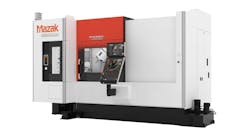Metal forming is critical to industrial operations supplying automotive parts and structural elements for buildings, machinery, furniture, and so many other products made of steel and aluminum. If errors are cropping up in your metal forming line, it may be difficult to pinpoint exactly where the problems are occurring.
To make that puzzle a little bit easier to solve, here’s a quick guide to help you troubleshoot common metal forming failures.
Welds Splitting or Cracking — Welds are a common way to join metal parts, and good welds can be indestructible — so why are your welds splitting or cracking, either during welding or after the product is complete?
First, let's look at the two common types of cracking, hot and cold. Hot cracking occurs at high temperatures — usually in excess of 1,000° F — and often will be apparent as soon as the weld solidifies. These types of cracks are further classified three ways:
• Segregation cracking occurs near the center of a weld and happens when low-melting-temperature metals are allowed to concentrate at the center of the weld.
• Bead shape cracking occurs when the parts to be welded fit together poorly. It doesn't allow for an even or solid bead.
• Crater cracks and holes occur when the welder stops before completing a pass.
Cold cracking, on the other hand, happens at extremely low temperatures. These cracks usually start in the welded material and then move into the weld. Thick metals that are prone to rapid cooling tend to exhibit cold cracking.
Premature Punch Wear — The wear on a punch will vary greatly depending on the type of metal being formed and the amount of pressure exerted on it. This problem can be hard to gauge because a punch that lasts for 100,000 hits on one production line might last only 5,000 hits on another.
If you think your punches are wearing out prematurely, take a look back at previous punch replacements. How many hits, on average, did you achieve from each punch before it required replacement? If you normally replace punches every 50,000 hits and suddenly have to replace them every 10,000, what changed? New metal supplier? New settings in the punch press?
This situation might not even be caused by a malfunction but to a change in supplies or settings. Figure out when the problem started and the where will fall into place.
Cracked Dies — Dies are a common feature of metal forming operations, so when they start stretching, cracking or splitting, it's definitely a problem. What can cause hard steel tools to stretch and crack? “This is a function of selecting the correct tool material and is related to the girth of the tool,” said Dave Hoover, technical advisor at DIE-TECH, Inc.
A problem with a die is usually first indicated by what is known as necking — a stretch mark in the metal that shows it has exceeded its capabilities but hasn't yet failed to the point of a full rupture. Necking is often the only visible sign that there’s a problem with the die before the metal fails entirely and ruptures.
A cracked die may be caused by a number of factors, including temperature changes in the manufacturing process, additional stress placed on the die or any number of other variables. Hoover stated, “[O]ne must be sure the force of the tool hitting the raw material is straight down, not being applied at an angle.”
The most important action is to regularly inspect your dies for any sign of wear. If you start to see signs of this wear and stretching, it's time to inspect the rest of the production line to see what’s causing the problem. “If you discover consistent failure of a portion of a die, you need to redesign the tools by increasing their girth or selecting a different tooling steel,” he added
Metal Fractures — Metal is not something most people normally think of as brittle; unlike ice or glass, it doesn't normally shatter when dropped or struck. During metal forming, there are two types of potential metal fractures: brittle and ductile.
Brittle fractures occur when the metal is so fragile that it will shatter when shaped or even when dropped on the floor. “A brittle fracture typically happens early in the forming process,” says Hoover, “you will see a rupture of the grain structure.” Most metals are hardened against this, but occasionally, metal will be processed to the point that loses its microstructural integrity, as the molecules become aligned in such a way that they are brittle and prone to breaking.
The only way to solve this problem is to replace the metal with a new batch — once it becomes brittle, it is essentially unusable for forming. Thankfully, brittle fractures tend to be rare with modern metal forging techniques.
Ductile fractures, on the other hand, allow the metal to stretch and deform before it finally fractures — similar to the necking described above. This issue causes irregularities in the thickness of the metal, making it difficult or even impossible to create a proper form. How can you avoid factures? Hoover recommended, “avoid[ing] consecutive bends in one operation (use two, three, or four stations to gradually bend the metal) and ensure proper grain orientation when designing the component.”
Metal forming includes several of the most effective functions available to modern manufacturers, so it's crucial for them to be able to figure out why problems are occurring during the process. “Three-dimensional modeling in CAD software is an invaluable tool to help understand the relationships of angles, bends, and critical dimensions for the success of the final product.”
Some basic troubleshooting tools can make finding the source of the problem that much easier.
Megan Nichols is an amateur astronomer and environmentalist, and a writer on a wide range of scientific topics. Her recent contributions to AmericanMachinist.com have examined the methods and applications of different metal finishing processes, and the different advantages of electroless plating and traditional plating technologies. She has offered insights on managing workers and robots, improving machine shop efficiency, Smart manufacturing, and other emerging issues in manufacturing technology. Follow Megan on Twitter @nicholsrmegan.








